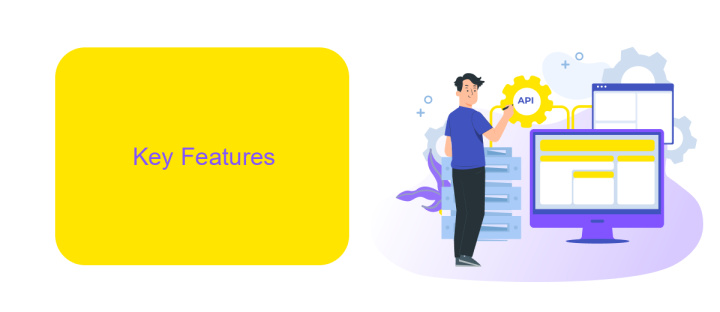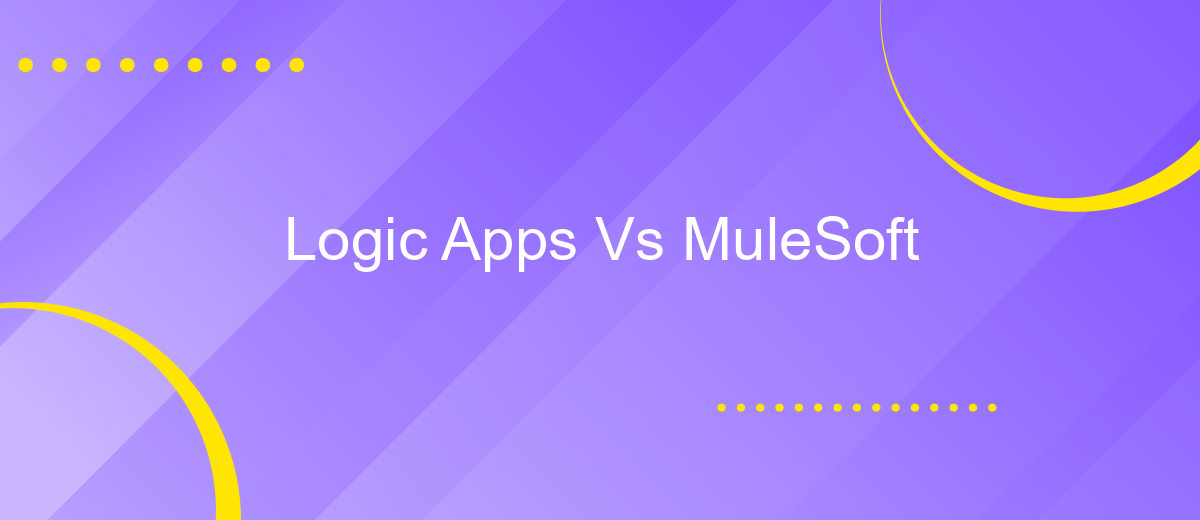Logic Apps Vs MuleSoft
In today's rapidly evolving digital landscape, businesses are increasingly relying on integration platforms to streamline operations and enhance connectivity. Two prominent contenders in this space are Microsoft's Logic Apps and MuleSoft's Anypoint Platform. This article delves into a comparative analysis of these powerful tools, examining their features, capabilities, and suitability for various organizational needs. Discover which platform aligns best with your integration requirements.
Overview
Logic Apps and MuleSoft are two powerful tools designed to streamline and automate business processes through integration. Both platforms offer distinct features and capabilities that cater to different business needs and technical requirements.
- Logic Apps: A cloud-based service provided by Microsoft Azure, facilitating the automation of workflows and integration of applications and data across different systems.
- MuleSoft: An integration platform that enables businesses to connect applications, data, and devices with APIs, providing a unified approach to integration.
Choosing between Logic Apps and MuleSoft depends on various factors such as the complexity of integration, scalability needs, and existing infrastructure. Additionally, services like ApiX-Drive can further enhance integration capabilities by offering a user-friendly interface and pre-built connectors, making it easier to automate and manage workflows without extensive coding.
Key Features

Logic Apps and MuleSoft offer distinct key features catering to various integration needs. Logic Apps, part of the Microsoft Azure ecosystem, provides a cloud-based service designed for complex workflows and automation. It supports a vast array of connectors, enabling seamless integration with numerous services and applications. Additionally, Logic Apps offers a visual designer, simplifying the creation and management of workflows without the need for extensive coding knowledge.
On the other hand, MuleSoft stands out with its Anypoint Platform, which allows for API-led connectivity. This platform is renowned for its robust API management and comprehensive integration capabilities. MuleSoft's DataWeave language facilitates data transformation, and its design center ensures efficient API development. For those seeking an alternative, ApiX-Drive emerges as a valuable service, offering a user-friendly interface for setting up integrations without programming skills. It supports a wide range of applications, making it a versatile tool for businesses looking to streamline their processes.
Integration Capabilities

When comparing Logic Apps and MuleSoft, their integration capabilities are a crucial factor to consider. Both platforms offer robust tools for connecting various systems, applications, and data sources, but they do so in unique ways.
- Logic Apps: This cloud-based service from Microsoft provides a visual designer for building workflows. It offers pre-built connectors for over 200 services, including Azure services, Office 365, and third-party applications. Logic Apps excel in scenarios where seamless integration with Microsoft products is essential.
- MuleSoft: MuleSoft's Anypoint Platform is known for its comprehensive API management and integration capabilities. It supports a wide range of protocols and data formats, making it versatile for various enterprise needs. MuleSoft is particularly strong in handling complex integrations and managing APIs across different environments.
For businesses looking to streamline their integration processes further, tools like ApiX-Drive can be invaluable. ApiX-Drive simplifies the task of setting up integrations between multiple services, offering an intuitive interface and extensive support for a variety of applications. This can be especially beneficial for organizations that require quick and efficient integration solutions without deep technical expertise.
Pricing

When comparing Logic Apps and MuleSoft, pricing is a crucial factor to consider. Both platforms offer robust integration capabilities, but their cost structures differ significantly, which can impact your budget and decision-making process.
Logic Apps operates on a pay-as-you-go model, where you are charged based on the number of actions and triggers executed. This can be cost-effective for smaller projects but may become expensive as your integration needs scale up. MuleSoft, on the other hand, offers a subscription-based pricing model that includes a range of features and support options, making it suitable for larger enterprises with complex integration requirements.
- Logic Apps: Pay-as-you-go, based on actions and triggers.
- MuleSoft: Subscription-based, with various tiers and support options.
For businesses looking for a more flexible and cost-effective solution, ApiX-Drive can be a viable alternative. It offers a user-friendly platform for setting up integrations without the need for extensive technical knowledge, and its pricing is designed to accommodate businesses of all sizes. By evaluating the pricing models of Logic Apps, MuleSoft, and ApiX-Drive, you can choose the best solution that fits your budget and integration needs.
Use Cases
Logic Apps are ideal for automating workflows and integrating cloud-based applications with minimal coding. They are commonly used in scenarios like automating business processes, data integration, and connecting disparate systems. For instance, a company can utilize Logic Apps to streamline order processing by integrating their CRM, ERP, and email systems, ensuring that data flows seamlessly between departments. This makes Logic Apps particularly useful for businesses looking to enhance operational efficiency and reduce manual tasks.
On the other hand, MuleSoft is designed for more complex integrations and API management. It's well-suited for enterprises that require robust data transformation and connectivity across a wide range of systems, including legacy applications. MuleSoft can be used to build a unified customer view by aggregating data from various sources, such as databases, SaaS applications, and on-premises systems. Additionally, services like ApiX-Drive can complement these platforms by offering pre-built connectors and automation tools, further simplifying the integration process and reducing development time.


FAQ
What are the primary differences between Logic Apps and MuleSoft?
Which platform is more suitable for small to medium-sized businesses?
Can both Logic Apps and MuleSoft handle real-time data integration?
What are the cost implications of using Logic Apps vs MuleSoft?
Is there a service that can help with the automation and integration setup for both platforms?
Apix-Drive will help optimize business processes, save you from a lot of routine tasks and unnecessary costs for automation, attracting additional specialists. Try setting up a free test connection with ApiX-Drive and see for yourself. Now you have to think about where to invest the freed time and money!

